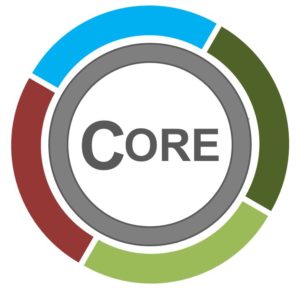
Access to the MRI control room or beyond is controlled by MRI technologists or MRI radiologists
Importance of caution in the MRI environment
- The MRI magnet is very powerful, capable of moving and dislodging ferro-magnetic objects of all sizes towards the magnetic field, potentially causing significant injury and/or death.1,2
- Loose metallic objects can become projectiles in the presence of the strong static magnetic field, and are prohibited in the MRI magnet room1
- Some implants/devices are unsafe and may cause harm to the individual.3–5
- The magnet is always on, even if the facility has no power.1
Access to the MRI environment
- Personnel within an MRI facility are identified as MRI personnel and non-MRI personnel.
- MRI personnel are further classified by level of safety education.2
- Level 1 personnel are those individuals who have passed the facility’s MR safety educational requirements to ensure that they would not be a danger to themselves or others in the MR environment
- Level 2 personnel are those individuals who have been more extensively trained and educated in the broader aspects of MR safety issues, including but not limited to issues related to the potential for RF-related thermal loading or burns and direct neuromuscular excitation from rapidly changing gradients
- In Zone III (see related BPG – Facility design), serious injury or death can occur when unscreened non-MRI Personnel or ferromagnetic objects and equipment are in the area.
- Level 2 MRI personnel are responsible for supervising and controlling access to Zone III (and Zone IV) of non-MRI personnel.
- Non-MRI personnel must be accompanied by, or under the immediate supervision of and in visual contact with, an individual who is of Level 2 MRI Personnel status throughout their stay in Zones III or IV, except in the changing room and/or bathroom, where verbal communication is sufficient.
- To avoid misunderstandings or questions of responsibility, each non-MRI Personnel individual entering Zone III must have a specifically identified Level 2 MRI Personnel individual, such as an MRI technologist, responsible for them throughout their stay in Zone III.
- This function of the Level 2 MRI Personnel is directly under the authority and responsibility of the MRI Medical Director or the Level 2 trained Physician responsible for the MR facility that day.2
- Level 2 MRI personnel are responsible for supervising and controlling access to Zone III (and Zone IV) of non-MRI personnel.
- Zone IV: (see related BPG – Facility design) This area is synonymous with the MRI scanner room itself (i.e., the physical confines of the room where the scanner is located).
- As part of the Zone IV site restriction, all MRI installations should provide for visual observation by Level 2 MRI Personnel to access pathways into Zone IV.
- By means of illustration only, the MRI technologists would be able to directly observe and control, via line of sight or via video monitors, the entrances or access corridors to Zone IV from their normal positions when stationed at their desks in the scan control room.
- Controlled site-access restriction to Zones III and IV must be maintained during resuscitation and other emergent situations for the protection of all involved.
- The entry door to Zone IV (i.e., the MRI scanner room) should be closed except when it must remain open for patient care or room/MRI system maintenance.
- During the times that the door to the MRI system room must remain open, a “caution” barrier is recommended at the entry to Zone IV to inhibit unintended passage of personnel and/or materials from Zone III to IV. Examples of caution barriers include easily adjusted straps or plastic chains secured across the doorway to Zone IV.2
References
- Shellock FG. Reference Manual for Magnetic Resonance Safety, Implants, and Devices. Biomedical Research Publishing Group; 2020. Accessed August 7, 2020. http://www.mrisafetybook.com/
- ACR Committee on MR Safety. ACR manual on MR safety. Published online 2020. Accessed August 7, 2020. https://www.acr.org/-/media/ACR/Files/Radiology-Safety/MR-Safety/Manual-on-MR-Safety.pdf
- CADTH. Magnetic Resonance Imaging for Patients with Implantable Cardiac Devices: A Review of Safety and Guidelines.; 2019. Accessed April 9, 2021. https://www.cadth.ca/sites/default/files/pdf/htis/2019/RC1090%20MRI%20Safety%20Final.pdf
- Srinivasan R, So CW, Amin N, Jaikaransingh D, D’Arco F, Nash R. A review of the safety of MRI in cochlear implant patients with retained magnets. Clin Radiol. 2019;74(12):972.e9-972.e16. doi:10.1016/j.crad.2019.06.011
- Kim Y-H, Choi M, Kim J-W. Are titanium implants actually safe for magnetic resonance imaging examinations? Arch Plast Surg. 2019;46(1):96-97. doi:10.5999/aps.2018.01466
